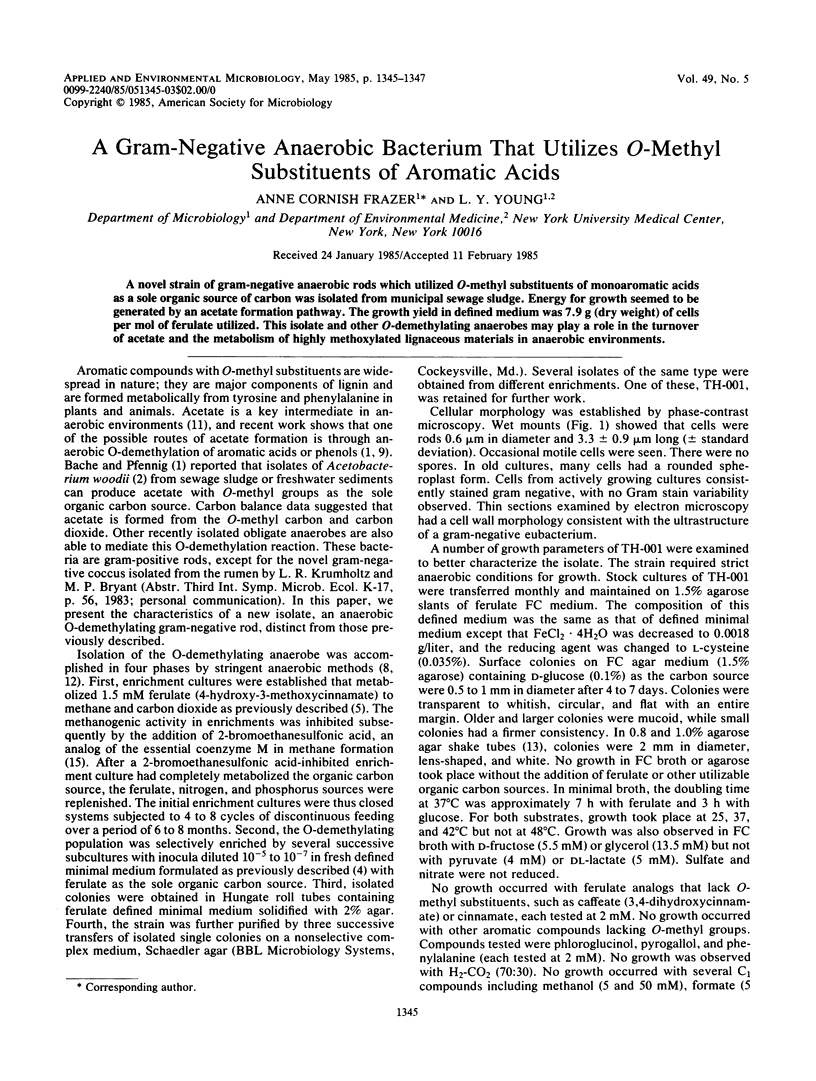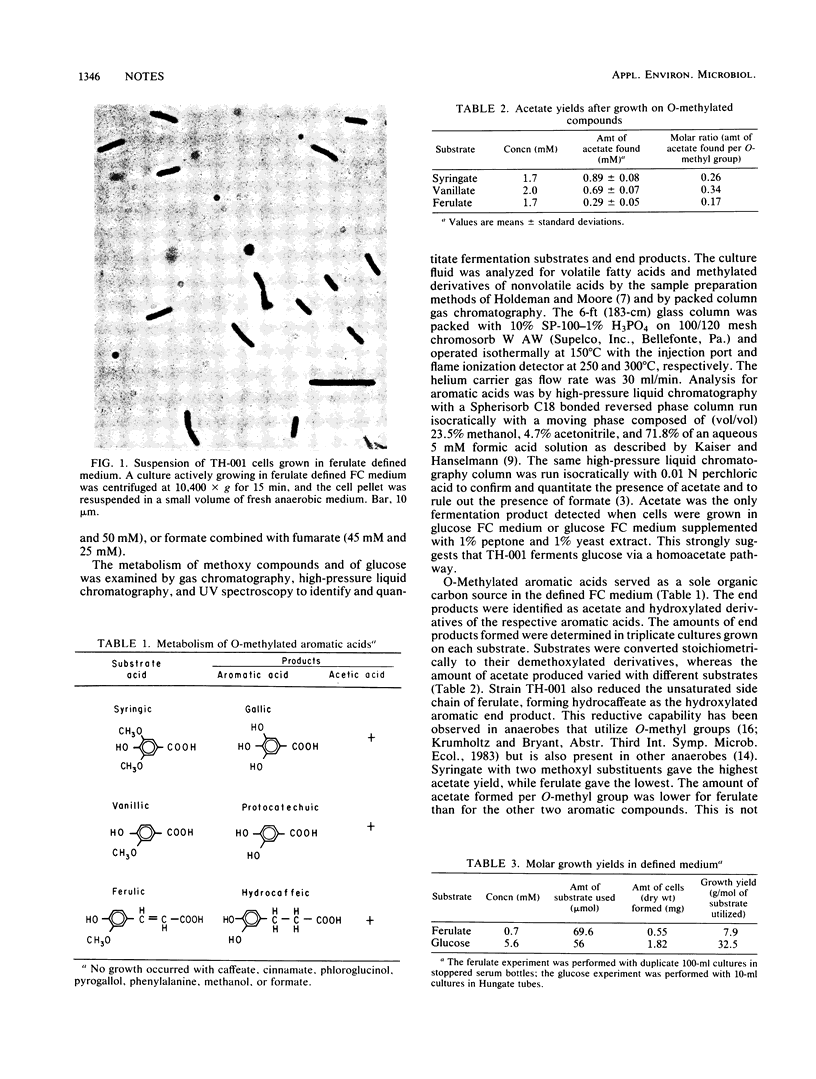Abstract
A novel strain of gram-negative anaerobic rods which utilized O-methyl substituents of monoaromatic acids as a sole organic source of carbon was isolated from municipal sewage sludge. Energy for growth seemed to be generated by an acetate formation pathway. The growth yield in defined medium was 7.9 g (dry weight) of cells per mol of ferulate utilized. This isolate and other O-demethylating anaerobes may play a role in the turnover of acetate and the metabolism of highly methoxylated lignaceous materials in anaerobic environments.
Full text
PDF


Images in this article
Selected References
These references are in PubMed. This may not be the complete list of references from this article.
- Healy J. B., Jr, Young L. Y. Catechol and phenol degradation by a methanogenic population of bacteria. Appl Environ Microbiol. 1978 Jan;35(1):216–218. doi: 10.1128/aem.35.1.216-218.1978. [DOI] [PMC free article] [PubMed] [Google Scholar]
- Healy J. B., Young L. Y. Anaerobic biodegradation of eleven aromatic compounds to methane. Appl Environ Microbiol. 1979 Jul;38(1):84–89. doi: 10.1128/aem.38.1.84-89.1979. [DOI] [PMC free article] [PubMed] [Google Scholar]
- Miller T. L., Wolin M. J. A serum bottle modification of the Hungate technique for cultivating obligate anaerobes. Appl Microbiol. 1974 May;27(5):985–987. doi: 10.1128/am.27.5.985-987.1974. [DOI] [PMC free article] [PubMed] [Google Scholar]
- Scheline R. R. Metabolism of foreign compounds by gastrointestinal microorganisms. Pharmacol Rev. 1973 Dec;25(4):451–523. [PubMed] [Google Scholar]
- Taylor C. D., Wolfe R. S. Structure and methylation of coenzyme M(HSCH2CH2SO3). J Biol Chem. 1974 Aug 10;249(15):4879–4885. [PubMed] [Google Scholar]



